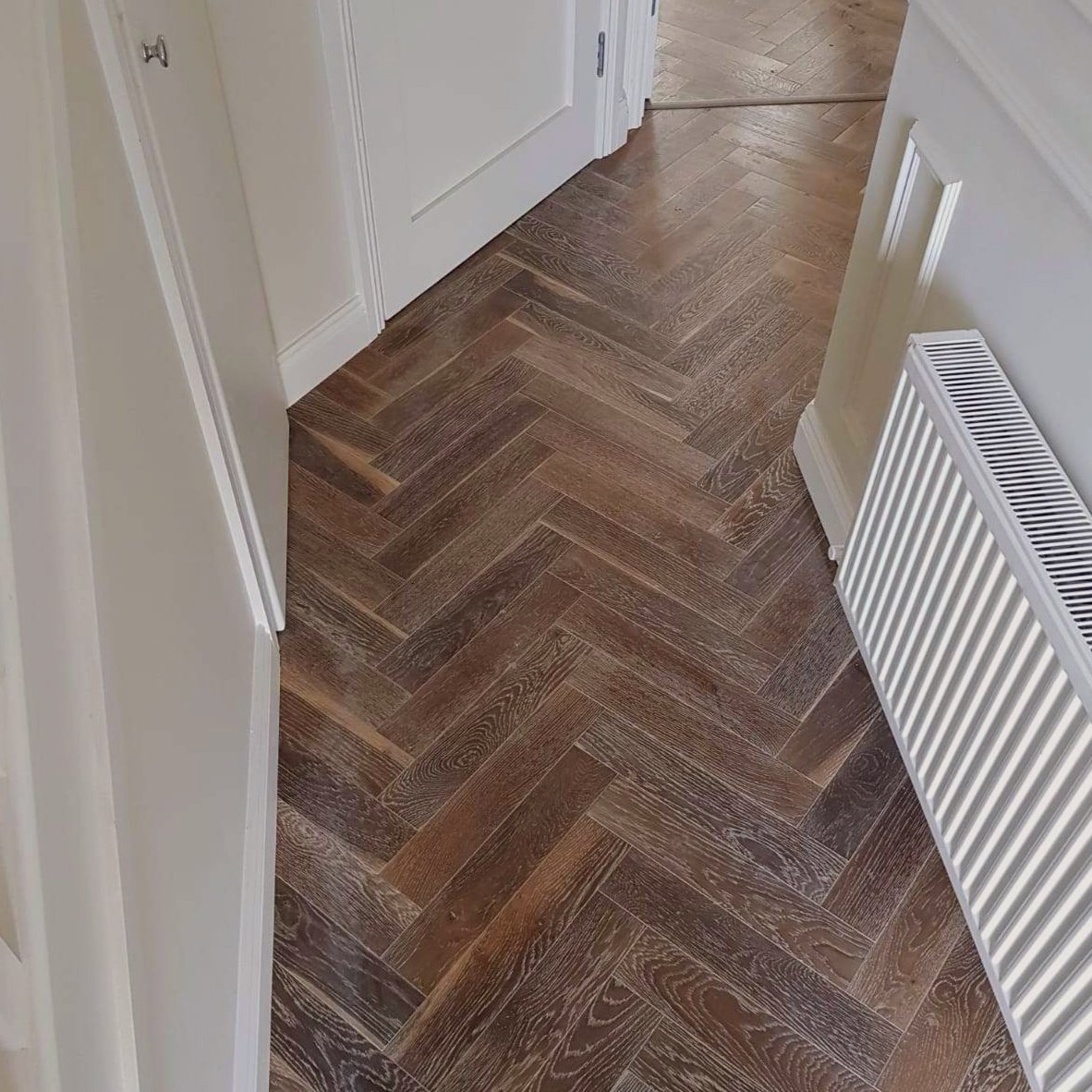Herringbone Laminate Flooring: Easy, Opulent, and Inexpensive

Alternatives for deck are genuinely perpetual, and picking the correct ground surface for your rooms isn’t a simple errand. On the off chance that you love the vibe of herringbone floors, you can accomplish it with an assortment of materials, including wood, vinyl boards, and tile. Hardwood herringbone floors are the most conventional sort, however they are extravagant to purchase and work escalated introduce. Overlay herringbone floors are more affordable and simpler to introduce, making them an ideal home improvement venture for more experience DIYers.
The celebrated herringbone design started with the Romans, who laid blocks in this example to make solid, stable streets. The example wasn’t utilized in deck until the sixteenth century, when it appreciated monstrous prominence until the later 50% of the eighteenth century. By and large venerated for its loftiness and plushness, herringbone wood floors were normally held for the affluent and respectable, introduced in manors, castles, official habitations, and impressive homes across Europe.
In spite of the fact that herringbone perfectionists demand the example has no spot in current structures, most planners tend to disagree. Truth be told, herringbone can change any room, including another layer of surface and development to the space. Notwithstanding, you would prefer not to go over the edge and give each room in your home a herringbone design. Spare it for an extraordinary room or a terrific passage.
Overlay wood flooring isn’t wood in any way, yet rather flimsy fiberboard boards printed with a picture of wood and secured with a straightforward wear layer. Dissimilar to customary hardwood floor boards, which are commonly 3/4-inch thick, cover boards are regularly 5/16-to 1/2-inch thick. Overlay wood flooring arrives in a tremendous assortment of hues and “wood” species, including extraordinary woods.
Introducing overlay flooring is a genuinely basic DIY venture, since sheets snap together effectively and commonly don’t need nails or paste. Strong hardwood ordinarily requires proficient establishment, particularly for something as detailed as a herringbone design. While overlay flooring is constantly introduced as a drifting floor that shouldn’t be made sure about to a subsurface, strong hardwood requires nailing, stapling, or sticking the boards down.
Overlay flooring is regularly laid over a compressed wood subfloor, yet its plan permits it to be introduced over existing deck. Dissimilar to strong hardwood and most designed hardwood floors, some cover floors can be introduced underneath grade or in high-dampness areas like pantries.
The life expectancy of overlay flooring is around 10 years, after which it typically should be supplanted. Strong hardwood deck can be consistently restored and will consequently keep going for ages. Be that as it may, for those on a limited spending plan, strong hardwood ground surface can be cost-restrictive, while overlay is substantially less costly.
Overlay herringbone floors are excessively simple to keep up. They’re dampness , clearance safe, and they’re anything but difficult to introduce. They’re ideal for high-traffic zones and families with heaps of children or pets, and they can without much of a stretch be introduced over brilliant warming frameworks.
The size your herringbone example ought to rely halfway upon your own tasteful and somewhat on the size of the room. Bigger rooms can continue a bigger, all the more rambling herringbone design, while littler rooms look better with a littler, more smaller example.
Laying a herringbone floor can be dubious, yet a genuinely experienced DIYer can pull it off with tolerance and cautious tender loving care only a small amount of an inch in deviation in one board can ruin the entire floor. Here’s the way it’s done, basically.
Position the main board against one side of the nailing clear. Spot the second board against the opposite side of the clear so it covers the finish of the principal board. Utilize a hammer and board to tap the boards firmly together. Keep laying two boards one after another to shape the herringbone design over the room. At the point when you arrive at the finish of the principal line, unscrew the nailing clear and move it to the contrary fringe so the long side presently faces the side of the room where you started. Keep laying boards, utilizing the nailing clear to remain totally even with the current courses. Keep moving the nailing clear and introducing columns. At the point when you’re finished laying the whole floor, there will be unfilled spaces where the nailing clear was. Fill them in, at that point trim each side of the floor with a roundabout saw so it’s flush against the fringe. Introduce the outskirt, and presto! Make the most of your excellent new herringbone floor.




